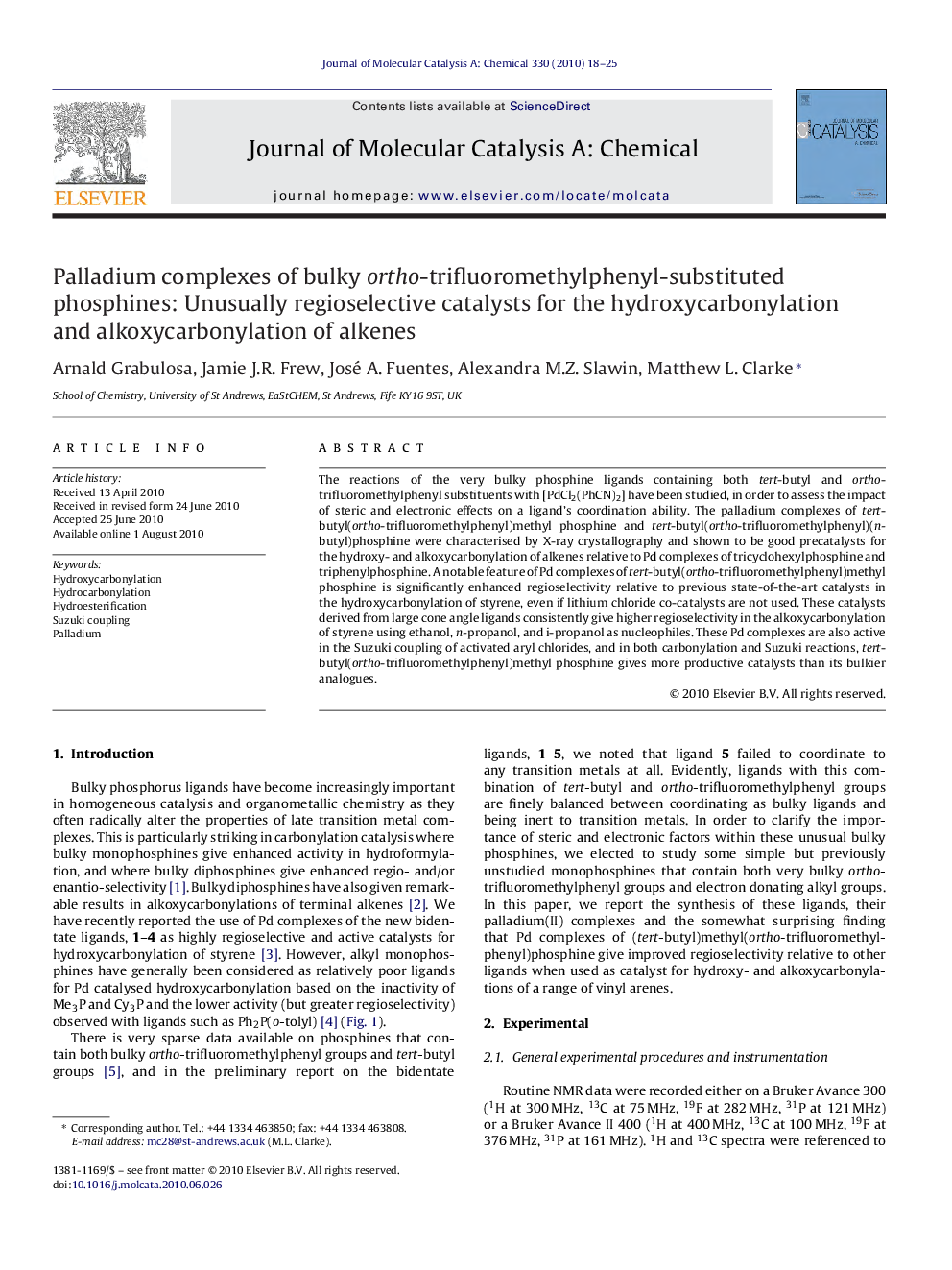| کد مقاله | کد نشریه | سال انتشار | مقاله انگلیسی | نسخه تمام متن |
|---|---|---|---|---|
| 66542 | 48437 | 2010 | 8 صفحه PDF | دانلود رایگان |

The reactions of the very bulky phosphine ligands containing both tert-butyl and ortho-trifluoromethylphenyl substituents with [PdCl2(PhCN)2] have been studied, in order to assess the impact of steric and electronic effects on a ligand's coordination ability. The palladium complexes of tert-butyl(ortho-trifluoromethylphenyl)methyl phosphine and tert-butyl(ortho-trifluoromethylphenyl)(n-butyl)phosphine were characterised by X-ray crystallography and shown to be good precatalysts for the hydroxy- and alkoxycarbonylation of alkenes relative to Pd complexes of tricyclohexylphosphine and triphenylphosphine. A notable feature of Pd complexes of tert-butyl(ortho-trifluoromethylphenyl)methyl phosphine is significantly enhanced regioselectivity relative to previous state-of-the-art catalysts in the hydroxycarbonylation of styrene, even if lithium chloride co-catalysts are not used. These catalysts derived from large cone angle ligands consistently give higher regioselectivity in the alkoxycarbonylation of styrene using ethanol, n-propanol, and i-propanol as nucleophiles. These Pd complexes are also active in the Suzuki coupling of activated aryl chlorides, and in both carbonylation and Suzuki reactions, tert-butyl(ortho-trifluoromethylphenyl)methyl phosphine gives more productive catalysts than its bulkier analogues.
Figure optionsDownload high-quality image (71 K)Download as PowerPoint slide
Journal: Journal of Molecular Catalysis A: Chemical - Volume 330, Issues 1–2, 1 September 2010, Pages 18–25